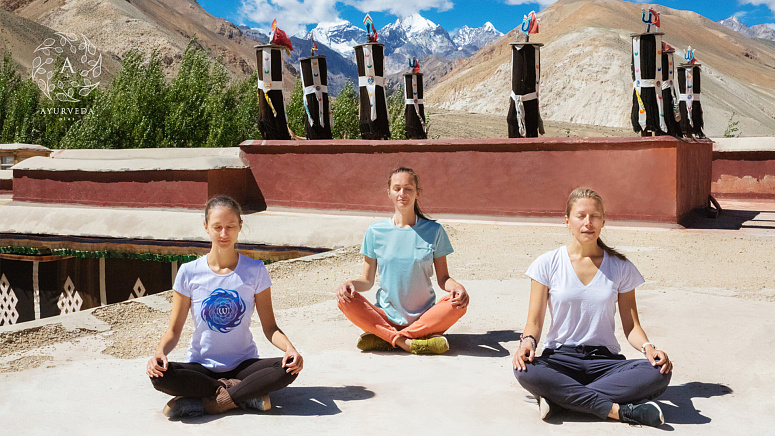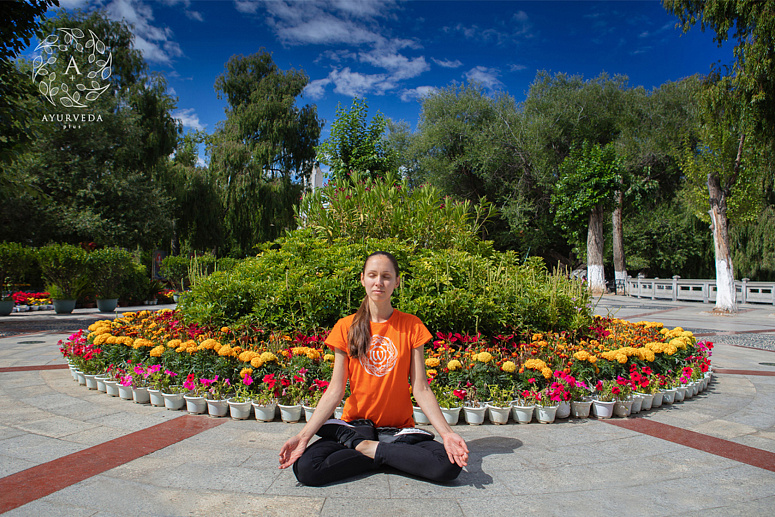Special body positions or arrangements of the fingers - mudras - direct energy to energy centers, awakening heightened states of the mind. When translated from Sanskrit, the word “mudra” has multiple meanings, sometimes defined as a binding “seal,” other times as “that which gives joy,” “wisdom.” When fingers touch in a certain arrangement, energy channels are either locked, allowing control and concentration of life energy, or opened to restore this energy’s continuous flow. The practice of mudras effectively cleanses the body’s psychic centers and regulates the power of pranic energy within and, if done consistently, can balance and harmonize elements of the human body due to the impact on energetically-active points on the fingers and palms.
An effective starting point
There exist many mudras, but the Jnana, or Gyan, mudra is often the first mudra that practitioners set out to master. The Sanskrit term “jnana” translates to “true knowledge” or “gesture of knowledge,” which, in a way, explains its significance as a starting point in one’s path of self-exploration.
In Jnana, the tips of the thumb (which indicates individual consciousness) and the index finger (a broader representation of the universal consciousness) are symbolically connected. The circle formed by their connection illustrates the exchange of knowledge and experience between the individual fragment and the universal whole.
Many spiritual schools, very different in their traditions, consider Jnana the optimal mudra for practice.
It has a powerful influence:
- greatly improves concentration in meditative asanas;
- stimulates the root chakra and pituitary gland;
- develops consciousness;
- facilitates the accumulation of knowledge;
- helps one clearly see the right path or choices;
- grants wisdom.
In Ayurveda, the knowledge mudra is implemented to:
- stimulate cognition;
- calm the nervous system;
- empower the mind;
- improve memory;
- harmonize the endocrine system’s functions;
- relieve pain, anxiety, depression, and apathy;
- subdue strong headaches;
- decrease blood pressure.
Any person, regardless of age or other restrictions, can feel great improvements in his wellbeing by practicing mudras several times a day for 5-10 minutes.
Knowledge mudra: how to practice
In a quiet, peaceful place without distracting sounds, people, or animals, get into a comfortable position for practicing this mudra- beginners can take a seated position on a chair, lie on the ground, or practice while walking. Before practicing, remove all jewelry from your fingers and wrists.
Proper technique:
- Connect the tips of your index fingers with the tips or bases of your thumbs.
- Softly connect the remaining fingers, leaving them straight and relaxed.
- Place both relaxed palms facedown on your knees to combine this mudra with meditation, or proceed with a single palm if the other is occupied with pranayama or reciting Japa.
- Close your eyes, maintaining calm and steady breathing.
- Concentrate on the mudra or your breath.
- Remain in this posture for at least 10 minutes, or the full span of your meditation time.
A variation of this mudra with an upward-facing palm was named the Chin-mudra, or the “seal of consciousness.” Distinctive differences can be seen between these two mudras, but both affect the body and mind with equal strength.
Mudras have been used by yogis and sages for millennia, and their abilities to promote physical and mental health, besides guiding individuals toward spiritual development, have been repeatedly shown. It is important to note that harmonizing energetic processes affect not only the practitioner but heal and tranquilize all of the surroundings.
Literature:
- Swami Brahmachari “Healing Power of Mudras. Health at Your Fingertips.” (available only in Russian)
- Swami Muktibodhananda “Hatha Yoga Pradipika.”
- Sergey Pankov “Mudras- Yoga of the Fingers.” (available only in Russian)

